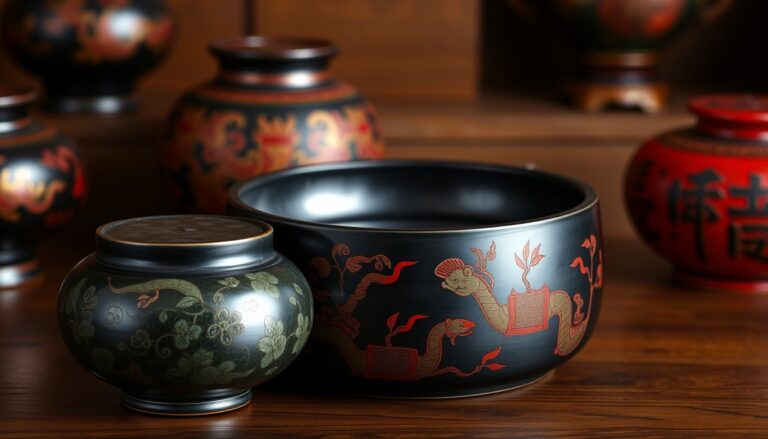Originating in ancient China over 3,000 years ago, lacquerware is a traditional art form made from the lacquer tree sap. Its durability and glossy finish have made it popular for ceremonial and decorative purposes across various cultures. With traditional, modern, and regional styles available, each piece of lacquerware boasts unique characteristics. Production involves harvesting the sap, applying multiple layers, and polishing to achieve a high gloss. Lacquerware holds cultural significance as a symbol of status, spirituality, and craftsmanship. To maintain its beauty, proper care and maintenance are essential.
By appreciating lacquerware, you can connect with its rich history and cultural heritage. Lacquerware, an ancient art form that originated in China more than 3,000 years ago, is crafted from the lacquer tree sap, providing it with a durable and lustrous finish. Various cultures have embraced this art form for ceremonial and decorative purposes. Traditional, modern, and regional styles of lacquerware each possess distinct characteristics. The production process involves extracting the sap, applying numerous coats, and polishing to achieve a brilliant sheen. Lacquerware carries cultural significance as a representation of status, spirituality, and skilled craftsmanship. Proper maintenance is crucial in preserving the beauty of lacquerware.
